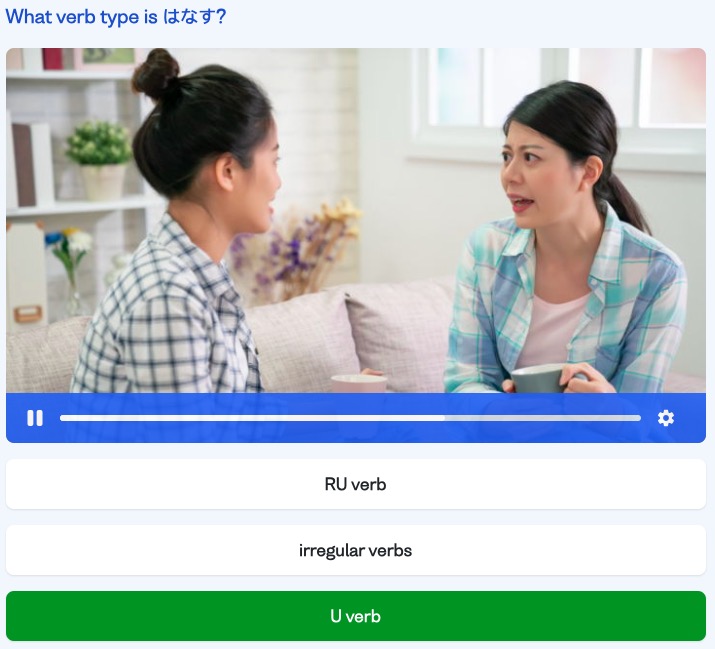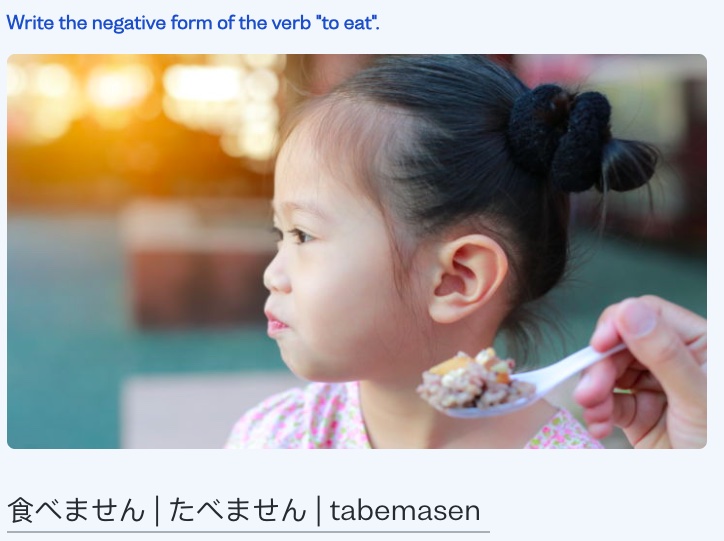Japanese Verb Conjugation Made Easy
Conjugation in Japanese can seem challenging, but Busuu makes it clear and simplified.
I want to learn...
When you start learning Japanese, you may find yourself hyper-focused on starting to learn the Japanese alphabet first, starting with romaji, then hiragana, continuing on to katakana, and finally kanji. After getting to know the Japanese alphabet, you then move on to get a better understanding of Japanese verb conjugation, and this article will serve as your guide as you carry on in this phase of learning Japanese.
Accurately conjugating Japanese verbs is an essential piece of the puzzle to effectively communicating and understanding the language. Knowing the basics of verb conjugation opens up your world when speaking to others.
Let’s start learning the basics of Japanese verb conjugation!
Japanese verb conjugation basics
Japanese verbs are divided into three verb types
1. Ru verbs
These are verbs that end in -iru and -eru.
Examples of this are miru (みる), which means “to look” and taberu (たべる), which means “to eat”.
2. Irregular verbs
Thankfully, there are only two irregular verbs in Japanese!
The 2 irregular Japanese verbs are suru (する), meaning “to do,” and kuru (くる), meaning “to come”.
3. U verbs
With the exception of verbs that end in "ru", all other verbs that end in "u" are called u-verbs. However, there are also u-verbs that end in "ru".
To figure this out, you can look at the vowel before the "ru" ending. If there is an "e" or an "i" before the "ru" then it is considered a ru-verb.
Examples of u-verbs are:
- nomu (のむ), meaning “to drink”
- iku (いく), meaning “to go”
- yomu (よむ) meaning “to read”
As you can see, the letters preceding these verb examples does not include the vowels "e" and "i", as we have explained, and thus these examples are considered as u-verbs and not ru-verbs.
How to conjugate Japanese verbs
Ok, so now that you know the three types of Japanese verbs, how do you conjugate them and use them in a sentence?
To use verbs in a sentence, they must be put into the -masu (ます) form. In casual speech, we can end sentences with a dictionary form (miru, taberu, nomu, iku, suru, kuru etc), but normally we use polite option -masu (ます) form so that one can avoid offending people.
It is a polite way of speaking, and unlike in English, we use -masu (ます) for both present and future tense — that’ll depend on the context of what you are saying. Although the written verb conjugation ends with -masu (ます), it is essential to note that the “u” is silent and is pronounced as “-mas”.
Here is a table that helps you learn how to use -masu (ます) to form a sentence:
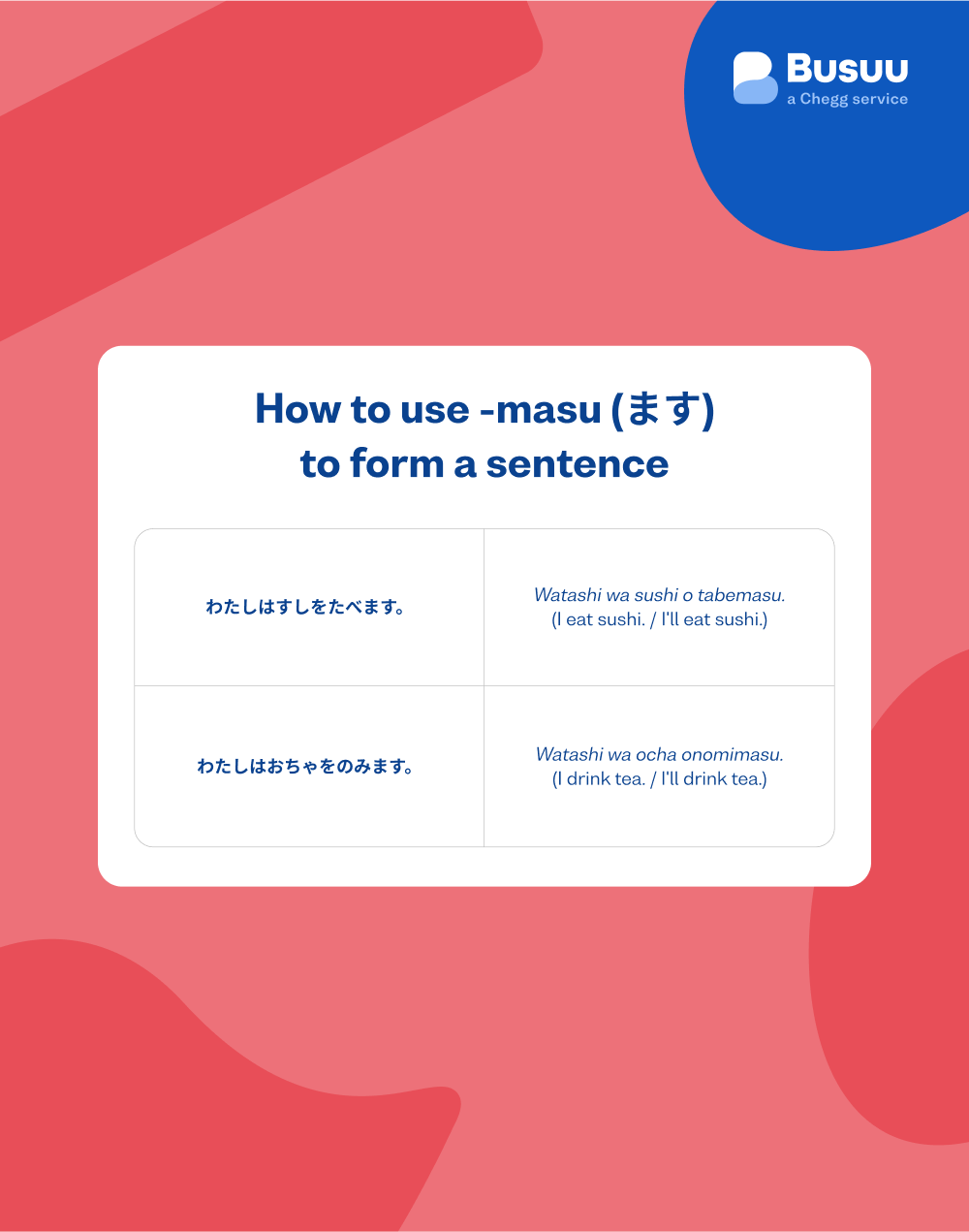
One common word you’ll often hear in Japan before meals ending in -masu (ます) is itadakimasu, which means “I receive food”, a perfect example of the use -masu (ます).
To use this Japanese word, you don't need to find yourself traveling throughout Japan, it is an important word to know how and when to use it whenever you are sharing a meal with your Japanese counterparts to show respect and thanks in both a professional or friendly setting.
Building a foundation with U-Japanese verbs
When conjugating verbs in Japanese from -ru (る), it is an easy step to remove -ru (る) and -masu (ます), but with U-verbs, there is a bit more to learn. We will further discuss Ru-verbs, but first, let’s establish a more understanding of U-verbs.
Another way of referencing U-verbs is Godan verbs or V1 verbs. When the word is conjugated, the -u will change to another vowel from the Hiragana alphabet a (あ), e (え), i (い), or o (お).
Having the Japanese alphabet on hand while practicing makes the Japanese verb conjugation learning process a lot easier. Eventually, you won’t need them, but they are a great tool to have handy at the beginning of your Japanese learning experience.
The table below, from our Japanese verb conjugation lessons, help further explain the change from u to i in the present polite form.
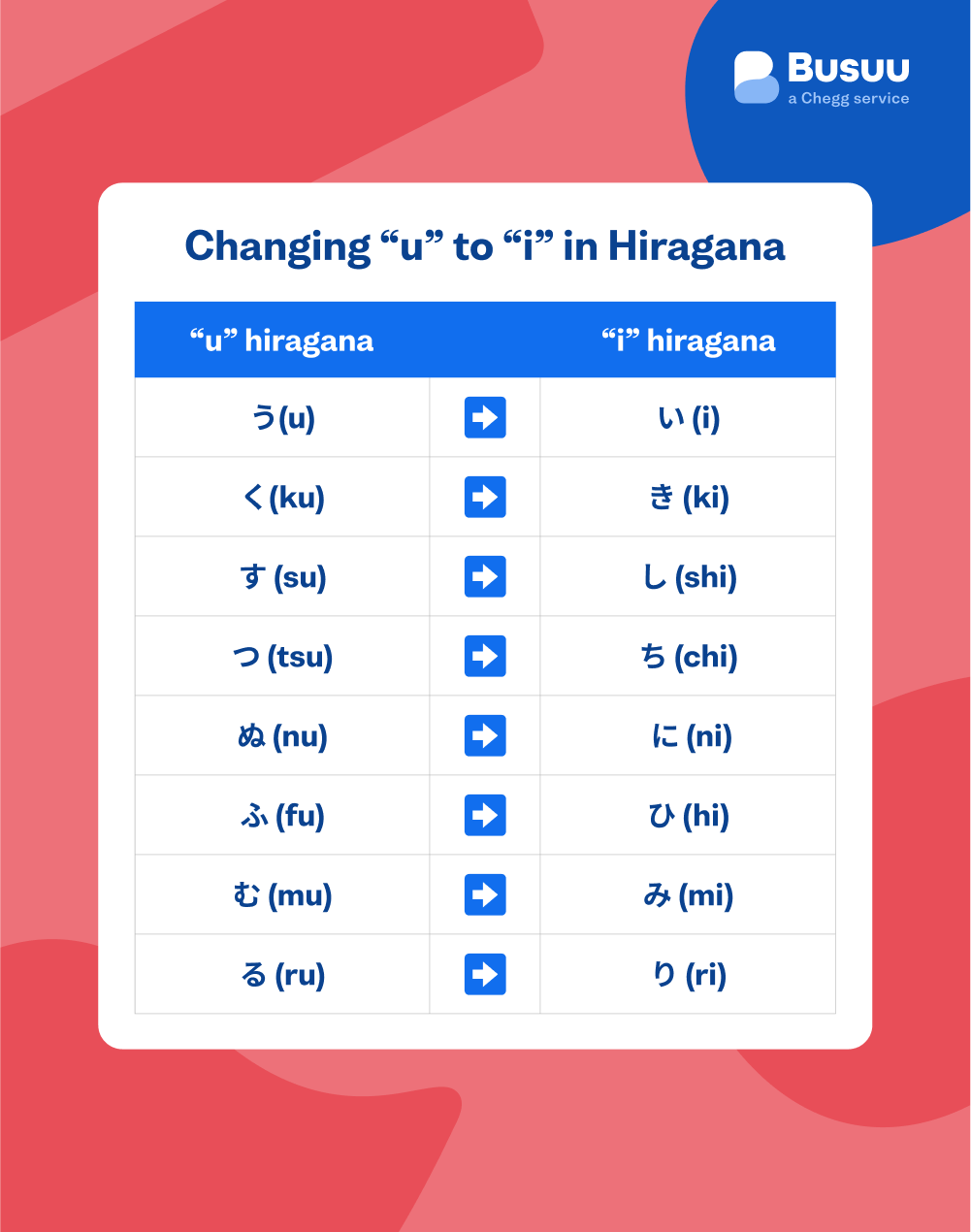
A quick lesson in conjugating U-verbs in the past polite form, you must change the u (う) to i (い) and add -mashita (ました). If we take it back to our “to drink” example, the verb nomu (飲む) doesn’t change to nomimasu (飲みます), instead it is changed to nomimashita (飲みました).
What you need to know about Ru Japanese verb conjugation
Ichidan verbs or Ru-verbs are verbs, as previously discussed, that drop the -ru (る) and add -masu (ます) in the present polite form. This class of verbs is also known as V2 verbs.
Let’s briefly venture a little into past polite form. We can give you a quick understanding of how to do this verb conjugation when conjugating Ru-verbs in the past polite form.
To correctly conjugate in this form, it is necessary to drop -ru (る) and add -mashita (ました). So when you want to say someone looked at or watched something, you change the characters from miru (見る) to mimashita (見ました).
From masu to masen, understanding negative sentences
Now that we know some of the basics of -masu (ます) and forming affirmative sentences, it’s time to learn about -masen (ません).
Masen is a verb form used to construct negative sentences. This verb conjugation, like -masu (ます), is for the present and future tense and not used for the past tense. The first step in making a sentence into a negative is exchanging -masu (ます) for -masen (ません). This rule never changes, making it easy to remember!
The -masen conjugation negates the verb
One example that will help you understand this concept is:
She does not eat meat. Kanojo wa niku o tabe masen. (彼女は肉を食べません。) vs She eats meat. Kanojo wa niku o tabemasu. (彼女は肉を食べます。)
Check out the table below for examples of conjugation and changes from infinitive to affirmative to negative:
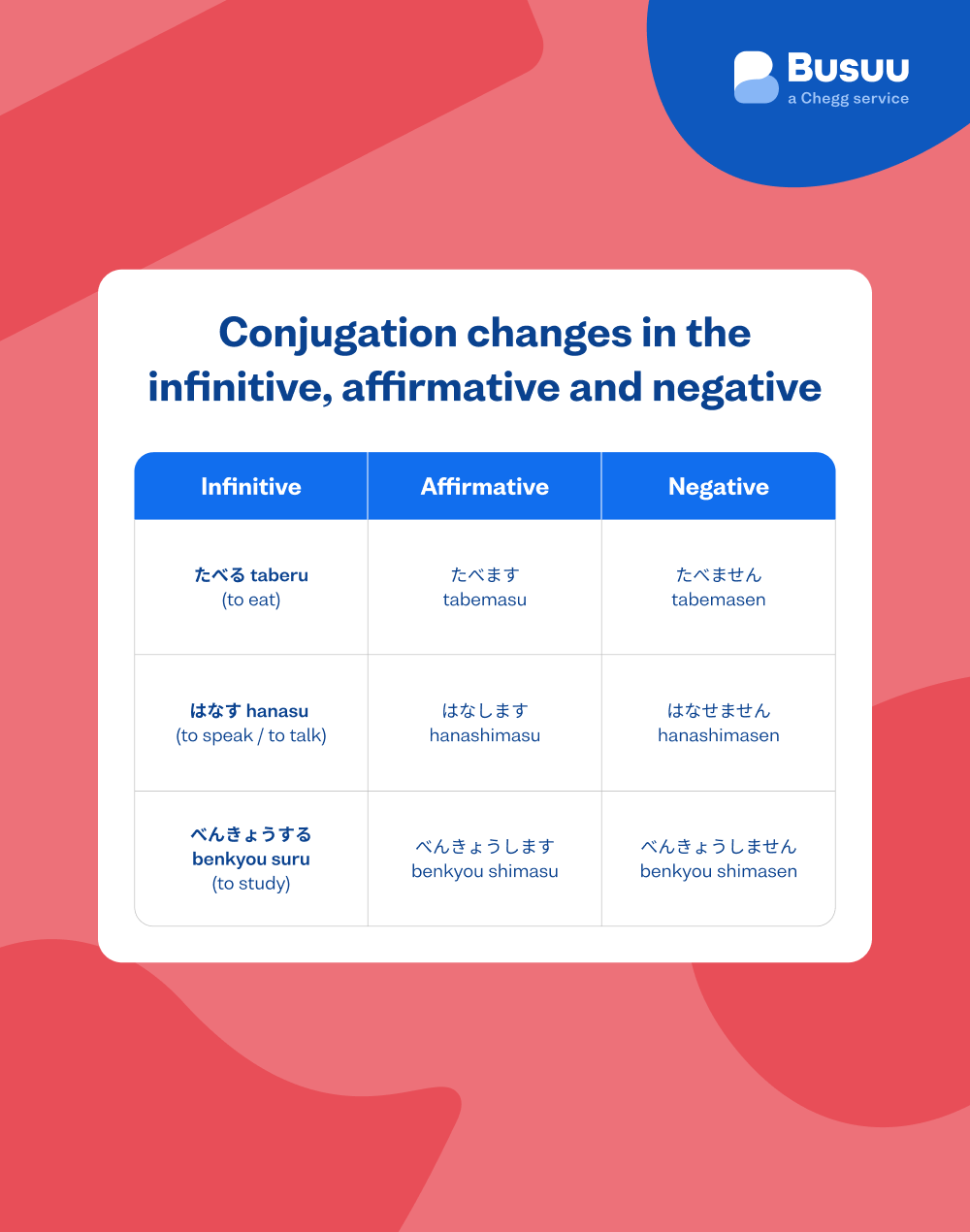
Japanese verb conjugation changes in the infinitive, affirmative and negative
| Infinitive | Affirmative | Negative |
|---|---|---|
| たべる taberu (to eat) | たべます tabemasu | たべません tabemasen |
| はなす hanasu (to speak / to talk) | はなします hanashimasu | はなせません hanashimasen |
| べんきょうする benkyou suru (to study) | べんきょうします benkyou shimasu | べんきょうしません benkyou shimasen |
We can’t forget about irregular Japanese verbs. Earlier in the piece, we mentioned a third type of verb — the irregular verb. You may be asking yourself, aren’t you going to tell us more about irregular verbs? Of course!
We haven’t forgotten about the V3 verb class. If you are concerned that irregular verbs will be hard to learn and tricky to grasp, you will be happy to find out that the V3 verbs are believed to be the easiest of the three because there are only two. The two verbs are: “to do”, suru (する), and “to come” kuru (来る). For now, this is all you have to know. As you continue in your studies, you will see how these irregular verbs play a part in Japanese grammar.
This is just the beginning of conjugating verbs in Japanese
By reading this far, you are well on your way to mastering Japanese verb conjugation already!
With the knowledge you have gained from this article, you have the stepping stone you need to fully grasp how to use conjugation to communicate clearly with a fellow native Japanese speaker or student. We hope you’re excited to keep learning not just Japanese verb conjugation, but other Japanese grammar and vocabulary that can help you on your way to Japanese fluency.
Busuu is here to help you keep practicing until you get to a point where you don’t have to think about conjugation anymore—it’ll just happen naturally!
Inspired to learn more Japanese?
We’ve laid down the basics for you here, but there is so much more to learn! With Busuu’s free online courses, you can be well on your way to learning more Japanese and be fluent in the language in no time!
